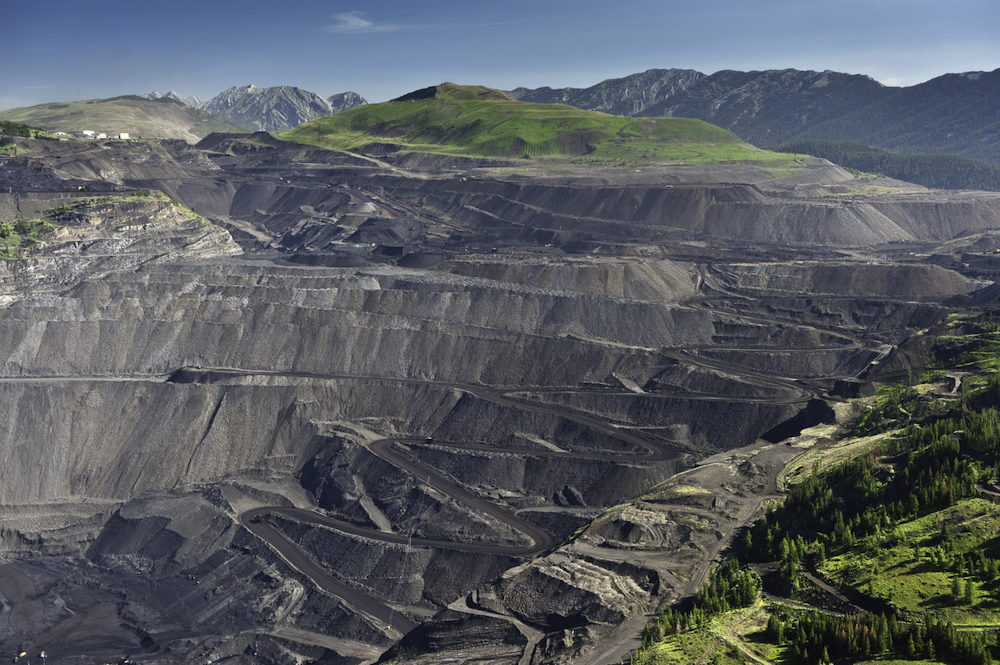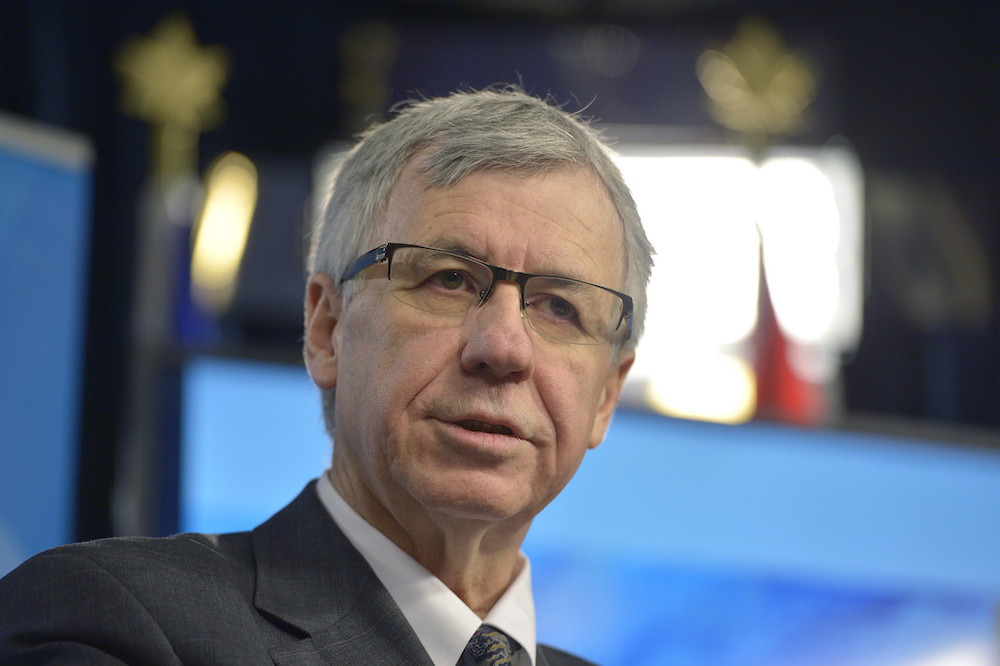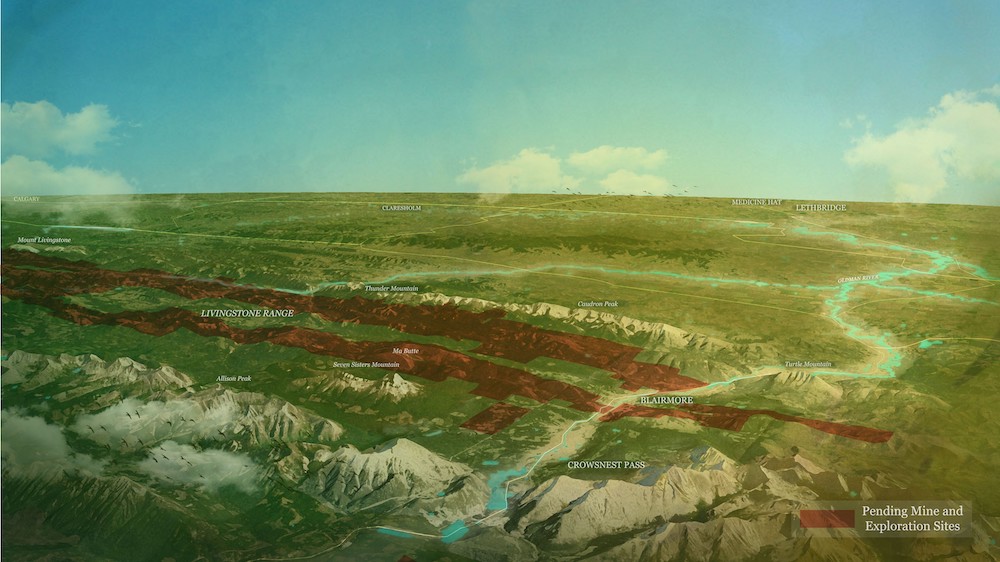Two Australian billionaires and four coal mining companies with names including Atrum and Montem plan to industrialize nearly 800 square kilometres of the southern Canadian Rockies to supply steel-making coal for Asian and Brazilian markets.
According to the Australian corporate presentations and financial documents, the foreign coal mining invasion is all about dwindling supplies of metallurgical coal at home, low royalties offered by a friendly “natural resource” government, and a dramatic downturn in the oilsands, which provides the miners what they call a “rare opportunity.”
As Alberta’s treasury sees declining revenues from bitumen, the Australian firms are betting the province will pivot to fast-tracking coal extraction along what the Blackfoot once called the "Backbone of the World.”
Already the Jason Kenney government has signalled that intent by sweeping away regulatory obstacles long in place.
Opponents say the proposed Aussie coal mines represent a grave threat to not only the ecology of the targeted region, but Albertans who depend on it.
The type of mining proposed includes scraping away mountaintops and is water-intensive. Critics say it will not only pollute watersheds that provide drinking and irrigation water for 1.8 million of Canada’s prairie dwellers but destroy existing sustainable economies from tourism to ranching.
The scale of the projects is vast.
The Australians are proposing multiple open-pit mines stretching from Crowsnest Pass north into the Oldman River watershed and deep into ranching country, where native fescue grasslands drape rolling hills along the Cowboy Trail.
The area to be mined, home to grizzly bears, elk and mountain sheep, would be carved into a landscape much like the Elk Valley on the B.C. side of the Rockies. The five open-pit mines operated there by Vancouver-based Teck Resources have contaminated local and U.S. waterways with toxic selenium. Teck has leases in the region that cover 340 square kilometres.
Now the Australians propose to double that mining footprint on the Alberta side of the mountains.
Meet the Australians
RIVERSDALE RESOURCES. This company, whose Grassy Mountain project is now under joint federal and provincial review, has been leading the charge since 2012, when it began pursuing its speculative play.
In 2019, Australian billionaire and arch-conservative Gina Rinehart bought Riversdale for $740 million as part of her vast mining and ranching empire: Hancock Prospecting.
Riversdale, which owns 140 sq. km of coal leases in the Crowsnest Pass, proposes to level 28 sq. km of Grassy Mountain seven kilometres north of the town of Blairmore, and then expand into its leased properties both north and south along the eastern slopes.
Before the company arrived in Canada, it existed as Riversdale Mining in Africa. There it sold a Mozambique hard-coking coal mine to the multinational Rio Tinto in 2010 for $3.7 billion. Two years later, Rio Tinto took a $3-billion write down on the property because, it said, the coal “was significantly less and lower quality coal than it had assumed.”
Local residents are deeply divided about Riversdale’s presence, despite years of public relations efforts. Riversdale holds local “Australia Day” celebrations where kangaroo hides are auctioned off for charities. The aim, say executives, is to promote “the culture and the company.”
Behind the smiles lie ambitions boldly stated in other settings. “The long-term strategy for us is to really become a multi-mine producer in that region” of Alberta, explained Steve Mallyon, Riversdale’s former CEO in a presentation to the Sydney Mining Club in December 2018.
At that time, Mallyon explained there were two factors driving the Grassy Mountain project: low coal royalties of one per cent in Alberta combined with the stagnation of bitumen mining in Alberta.
“It is all about the timing,” he emphasized, “particularly with the downturn with the oilsands sector. It makes our ability to produce this project on time and on budget a little easier.”
MONTEM RESOURCES. The Melbourne-based company, a penny stock on the Australian Securities Exchange, has multiple properties covering 220 sq. kilometres, including the proposed revival of four old open-pit mines that were closed decades ago. These old surface mines once supplied Japanese steel markets.
That mining disfigured the landscape but did not destroy the mountains because existing equipment was too small to take them entirely apart. Hydraulic backhoe excavators and 220-ton trucks, many of them automated, now make mountain top removal possible.

Crowsnest Pass, a picturesque town with a history of underground coal mining booms and busts, has not seen any active mining in the region for 55 years. Another three proposed mine sites by Montem would carve out mountains in the eastern slopes that protect the watershed of the Oldman River that empties into the South Saskatchewan River.
Peter Doyle, Montem’s managing director, notes that Australia, Canada and the United States now produce most of the world’s metallurgical coal.
“Canada should really be producing double, if not triple what it is currently producing, which is around 30 million tons for export,” he told the West Australian in 2018.
Rob Tindall, another Montem executive, recently compared Alberta’s regulations to those of free-wheeling Western Australia in a presentation that was removed from the internet after a Tyee article highlighted its contents.
In the presentation, Tindall called the province a good place to do business because it “tends to be a little bit more favourable from the regulatory perspective.”
ATRUM COAL. This firm, also listed on the Australian stock exchange, wants to take another 230-square-kilometre chunk out of the southern Rockies with its Elan Project, a huge complex of four open-pit mines.
Those mountain removal projects would require a 36-kilometre-long covered conveyor belt to transport the coal to rail lines in the Crowsnest Pass. The Alberta government granted Atrum Coal permission to punch in more than 30 kilometres of roads and more than 400 drill sites for exploratory work on prime grizzly bear habitat this summer.
The company says the quality of steel-making coal found on its leases in the Oldman River watershed is “readily comparable to those from Teck’s nearby Elk Valley complex, and the product planned to be produced at Riversdale’s Grassy Mountain development.”
In a corporate presentation made this year, Atrum Coal described the Alberta government as “engaged and supportive.”

Atrum’s leases are all located on land that was once governed by the province’s 1976 Coal Policy, which banned or restricted open-pit mining in much of the Rockies in an effort to protect watersheds and wildlife.
Earlier this year, the Kenney government removed that obstacle with no public consultation, though it did confer with the Coal Association of Canada headed by Robin Campbell, a former coal miner and Tory provincial environment minister.
According to public records, Campbell actively lobbied for the Coal Policy’s demise on behalf of his Australian clients.
Atrum Coal, which is 19 per cent owned by another Australian billionaire, Tim Roberts, celebrated the move.
“We welcome the decision of the Alberta government to repeal the now heavily outdated 1976 Coal Policy. It is a big step forward for the targeted progression and future development of our flagship Elan hard-coking coal project,” said Atrum CEO Andrew Caruso.
CABIN RIDGE. The fourth Australian player in the southern Rockies, Cabin Ridge, has been granted permission to begin exploratory work in the eastern slopes over its 190-square-kilometre lease.
It is owned by the hedge fund Warburton Group, which is chaired by Australian billionaire Tim Roberts, who also owns a share of Atrum Coal.
When all the Australian projects are tallied, “the size, scale and impact of these proposed mines is something that we have never seen on this landscape before and could change southern Alberta forever,” said Katie Morrison, conservation director at Canadian Parks and Wilderness Society for Southern Alberta.
Big Coal Down Under
Between 2003 and 2013, Australia — much like Alberta — experienced one of the world’s largest mining booms to supply growing Asian markets with steel-making coal, thermal coal and iron ore. The country exports about half the world’s hard-coking coal used to turn iron ore into steel.
But that boom has largely ended. Depleting resource quality and poor economics in existing mines as well as increased opposition to open-pit mining, has forced the Australians overseas.
Last year, the New South Wales Land and Environment court rejected an open-pit mine for hard-coking coal proposed in the community of Gloucester Valley.
The beef and dairy community is about the same size as the Crowsnest Pass, population 3,000, and just as scenic with towering mountain vistas.
The judge said the mine wasn’t in the public interest and cited the same reasons that ranchers, landowners, irrigators, tourist operators and conservationists are now marshalling in their public campaign to reject the Aussie invasion in the Rockies.
In his lengthy and landmark ruling, the judge said that “the exploitation of the coal resource in the Gloucester Valley would not be a sustainable use and would cause substantial environmental and social harm.” He said the project would also “cause noise, air and light pollution that will contribute to adverse social impacts.”
The judge added the open-pit mine would impoverish “people’s way of life; community; access to and use of infrastructure, services and facilities; culture; health and well-being; surroundings; and fears and aspirations.”
To the alarm of Australia’s powerful mining industry, the judge also cited climate change as major reason for rejection: “The construction and operation of the mine, and the transportation and combustion of the coal from the mine, will result in the emission of greenhouse gases, which will contribute to climate change.”
But in Alberta, a province that has rejected a national carbon tax and lags in policies to mitigate climate change, Aussie coal miners are now hoping to recreate the same formula for their past success at home: low royalties, low corporate taxes, minimal regulations and facilitating politicians.

Noted Australian journalist Paul Cleary has observed that Australia built a resource regime on coal and iron mining diametrically opposed to Norway’s relationship with oil.
Norway’s approach maximized returns for Norwegians, the owners of the resource and saved for the future.
In contrast, Australia has rewarded industry with big profits rather than flow higher proceeds into the public treasury. Australia’s “coal, iron and petroleum resources are subjected to modest mineral royalties that don’t return a share of super profits, while artful tax dodging by the big multinationals allows them to minimize corporate tax,” noted Cleary.
In 2010, Australia’s powerful mining lobby spent $22 million to bury a proposed super profits tax on mining income that would have raised $100 billion for Australia’s treasury over a decade. Gina Rinehart led that charge with the cry of “axe the tax.”
Rinehart, in her book titled From Red Tape to Red Carpet and Then Some, argues that governments need to dump regulations, lower taxes and roll out the red carpet for miners in order to “create, innovate, prosper and have an exciting future.”
In many respects the Kenney government has followed Rinehart’s right-wing prescription.
In addition to rescinding the Coal Policy, the Kenney government has sent letters of support to Australian mining speculators offering them less red tape and lower corporate taxes. As well, it has promised speedy permitting. And it has staffed the Alberta Energy Regulator, which will review each coal mining project, with people whose pasts are aligned with resource extracting corporations. One is the self-described “political activist” John Weissenberger, who worked on Jason Kenney’s election campaign.
Revolt in Alberta’s ranchlands
The government’s cozy relationship with Aussie coal miners and speculators has alarmed and outraged landowners and ranchers who graze cattle in the eastern slopes, used for that purpose since the turn of the century.
“The call to action for me is about what’s in the best interests of Canadians and Albertans,” Jolayne Gardner told The Tyee. “And it’s certainly not about a short-term economic gain for foreign-owned companies. This province has done enough of that in recent years.”
She runs the Blue Bird Ranch along with her husband Cam and two children in the province’s historic foothills. The Gardners’ ranch would be directly affected by noise, coal dust and water pollution from the mines.
At a recent debate about the Aussie invasion in Calgary organized by local ranchers, Coal Association of Canada president Campbell bristled at the suggestion that the Alberta government was serving the interests of foreign miners at the expense of local Albertans.
“I am happy we have people who want to come and invest in this province,” he declared. “I’m proud we have Australian investors here.”
He told the ranchers to not get “emotional” and listen to “the facts.” Alberta, he said, “is suffering and the unemployment is high. It is important to look at all economic opportunities.”
After the event, one foothills third-generation rancher reflected on Campbell’s comments. “Looking at facts and alternative economies is exactly what has caused so much opposition to the mines,” he continued. “They would do far more harm than good to the people, economy and environment of this area.
“As for getting emotional,” he added, “maybe if Mr. Campbell was facing a bulldozer about to go through his front yard and take out his water supply and livelihood with it, he would show some emotion too.”
Ranchers and other intervenors are trying to undo what Campbell lobbied for on behalf of coal interests. They are seeking a judicial review of the Kenney government’s decision to wipe away the Coal Policy, on the grounds that it broke the law by not including proper public consultation. That hearing is scheduled for January 2021.
Water scientist David Schindler, a noted professor at the University of Alberta, called the mine proposals short-sighted and foolhardy.
“The best example of why you shouldn’t mine in mountain watersheds comes from Appalachia where mountaintops have been pushed into streams, aquifers have been destroyed and selenium and other toxic trace metals contaminate the watershed.”
He sees a lesson in Alberta’s experience with the oilsands, now losing investors as analysts predict that globally climate change regulations and low prices will render bitumen mining projects “stranded assets” incapable of breaking even.
If the Australian invasion is given free rein, “the coal will not be used for long,” said Schindler, “so again Alberta will be left with stranded assets,” along with a legacy of degraded landscapes. ![]()
Read more: Energy, Environment
















Tyee Commenting Guidelines
Comments that violate guidelines risk being deleted, and violations may result in a temporary or permanent user ban. Maintain the spirit of good conversation to stay in the discussion.
*Please note The Tyee is not a forum for spreading misinformation about COVID-19, denying its existence or minimizing its risk to public health.
Do:
Do not: